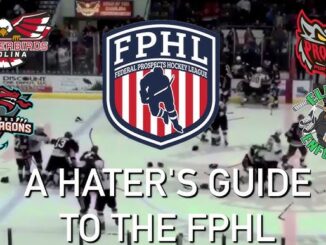In a surprising turn of events, the East Coast Hockey League (ECHL) has announced a two-year partnership with the Dallas Cowboys, marking an unprecedented collaboration between a major professional football team and a minor league hockey organization. This deal has raised eyebrows across both sports industries, prompting a range of reactions from fans, analysts, and stakeholders.
### The Nature of the Deal
The ECHL, a prominent hockey league known for its development of players and its role as a feeder system for the NHL, has inked this two-year agreement with the Dallas Cowboys, one of the NFL’s most storied franchises. While the specifics of the deal have not been fully disclosed, it is understood that the partnership will involve a range of cross-promotional activities and joint ventures aimed at expanding the reach and fan engagement of both organizations.
### Reasons Behind the Partnership
The decision to partner with the Dallas Cowboys seems to stem from a desire to leverage the Cowboys’ massive brand and extensive fan base to boost the ECHL’s visibility. The ECHL has been seeking ways to enhance its profile and attract a larger audience, particularly as it competes with other hockey leagues and sports for attention and sponsorship dollars.
1. **Brand Exposure and Market Expansion**: The Cowboys’ national and international presence offers the ECHL an unparalleled opportunity for brand exposure. By associating with a high-profile team, the ECHL hopes to tap into the Cowboys’ vast fan base, potentially converting football fans into hockey enthusiasts. This move could also help the league penetrate new markets where hockey has traditionally been less popular.
2. **Revenue Streams**: The partnership is expected to open new revenue streams for the ECHL through joint marketing efforts, merchandise sales, and ticket promotions. Leveraging the Cowboys’ marketing expertise and resources could help the ECHL achieve higher attendance figures and increased merchandise sales.
3. **Cross-Promotional Opportunities**: The collaboration will likely include joint events, promotional campaigns, and perhaps even crossover appearances by players from both leagues. Such initiatives are designed to create buzz and drive engagement across both sports, benefiting both the ECHL and the Cowboys.
### Implications and Reactions
While the partnership is seen as a strategic move for the ECHL, it has garnered mixed reactions. Some view it as a savvy business decision that could elevate the league’s status and financial health. However, others are skeptical about the effectiveness of such a partnership, questioning whether the Cowboys’ fan base will translate into meaningful support for ECHL hockey.
1. **Positive Reactions**: Proponents argue that the deal represents a bold and innovative approach to sports marketing. By aligning with the Dallas Cowboys, the ECHL is positioning itself for a potential surge in visibility and credibility. The partnership could also pave the way for other unexpected collaborations in the future, blending different sports to create new fan experiences.
2. **Skepticism and Criticism**: Critics, however, point out that the partnership might be more symbolic than substantive. They argue that the differences between football and hockey audiences could limit the effectiveness of the cross-promotional efforts. Additionally, there is concern that the ECHL might face challenges in maintaining its unique identity while being overshadowed by the Cowboys’ larger-than-life persona.
### Future Prospects
As the two-year partnership unfolds, it will be crucial to monitor its impact on both the ECHL and the Dallas Cowboys. Success will likely be measured by increased visibility for the ECHL, higher attendance at games, and improved financial performance. Conversely, any challenges faced or perceived shortcomings in the partnership could offer valuable lessons for future endeavors.
In conclusion, the ECHL’s agreement with the Dallas Cowboys is a bold and unconventional move that underscores the league’s ambition to grow its presence in the competitive sports landscape. While the deal’s ultimate success remains to be seen, it represents a significant step in exploring new ways to engage audiences and drive growth.



Be the first to comment